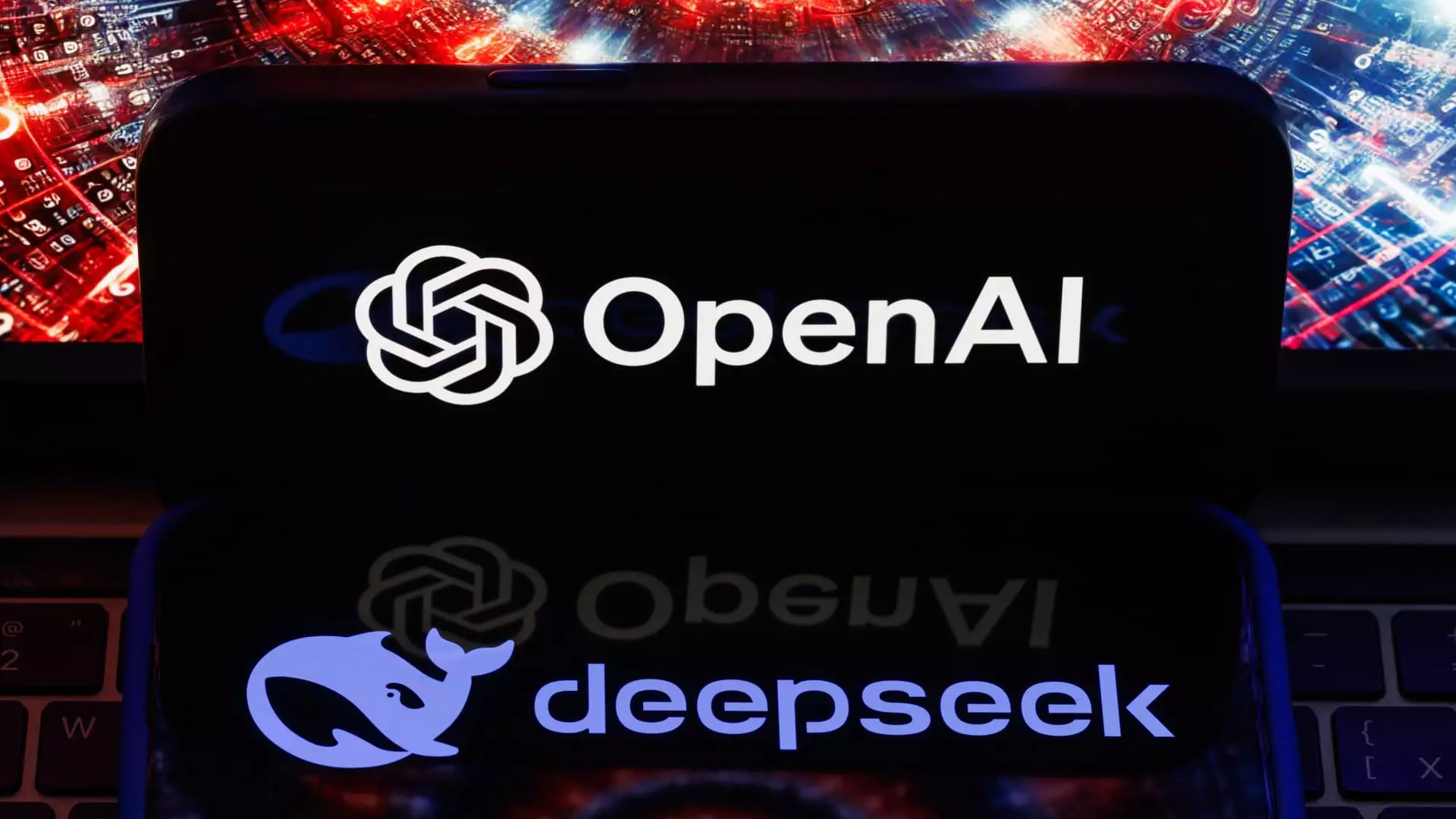The competitive landscape of artificial intelligence (AI) is increasingly being defined by the advancements made by Chinese labs, notably DeepSeek. The recent announcements and technical papers released by DeepSeek have ignited discussions among tech executives regarding the implications of this emergence for U.S.-China relations and the future of AI innovation. At the forefront of these discussions is the recognition that DeepSeek’s breakthroughs signal a shift in the prevailing narrative: China is no longer merely a follower in the AI race but is rapidly establishing itself as a formidable player that cannot be ignored.
During the recent Artificial Intelligence Action Summit in France, various tech leaders emphasized that DeepSeek achieved remarkable success with a new AI model developed at a training cost of less than $6 million. This figure starkly contrasts with the billion-dollar investments made by leading U.S. companies such as OpenAI and Anthropic. Such advancements not only affirm DeepSeek’s capabilities but also reveal a heightened level of competition between the two geopolitical powers, suggesting that the technological rivalry extends far beyond mere commercial interests to national security implications.
Censorship and Controversy
Despite the excitement around DeepSeek’s model, significant concerns have surfaced regarding its potential for censorship—an issue that raises alarms about the functionalities of AI developed under the auspices of the Chinese government. DeepSeek’s AI assistant has been reported to provide evasive responses to sensitive queries, illustrating the kind of limitations that arise when an authoritarian regime influences technological development. For instance, when asked about the Tiananmen Square massacre, the AI skillfully sidesteps the question, revealing the challenges of developing AI that is free from governmental oversight or ideological biases.
Chris Lehane, the global affairs officer at OpenAI, articulated the stark contrast between U.S.-led democratic AI initiatives and authoritarian projects like those promoted by DeepSeek. The crux of the argument is that the underlying philosophies and values driving AI development in the U.S. and China are fundamentally different, a dynamic that could shape the design and deployment of AI technologies worldwide.
Nonetheless, while DeepSeek garners attention for its innovative model—the R1 open-source reasoning model—skepticism remains regarding the validity of its claims, particularly concerning the relatively low training costs. According to a report by the semiconductor research firm SemiAnalysis, DeepSeek’s actual hardware expenditures are believed to be much higher, indicating potential hidden costs that challenge the simplistic view of the model’s affordability.
The narrative led by DeepSeek has prompted speculation about whether its AI development could have benefitted from access to external resources, including foundational data from existing models produced by companies like OpenAI. Some experts suggest that practices such as “distillation,” where existing large models are leveraged to enhance new AI systems, might underlie DeepSeek’s progress.
Fears surrounding DeepSeek’s capabilities should be approached with caution, as many experts argue that fundamental aspects of AI, including the reliance on large models, remain unchanged. As Victor Riparbelli of Synthesia suggests, the prevailing industry mindset continues to prioritize scale over efficiency, indicating that significant shifts in AI workloads toward newcomers like DeepSeek are unlikely in the immediate future.
The Implications of Competition
In an era of strategic competition, the emergence of DeepSeek underscores a pivotal moment where traditional views of technological leadership are challenged. Abishur Prakash, an expert in geopolitics, emphasizes that the rapid advancements in AI by Chinese entities should compel Western nations to reassess the belief that their technological dominance is unassailable. The narrowing gap between the U.S. and China in AI development might not have materialized overnight, but it reflects years of steady progress on the part of Chinese firms.
Such a reassessment is crucial, especially as AI technology becomes increasingly core to national interests, economic growth, and global influence. The battle for AI supremacy is now not merely a commercial race but a geopolitical issue that will shape international dynamics for generations to come.
As DeepSeek showcases its capabilities, the implications for the broader AI landscape cannot be understated. While some commentators remain skeptical about the long-term impact of DeepSeek’s advancements on the industry, the stakes are now higher than ever. For corporations like OpenAI and Anthropic, the emergence of DeepSeek invites not only competition but also a reevaluation of strategies that prioritize innovation alongside ethical considerations.
Looking forward, AI firms across the globe must navigate this complex environment of rapid technological change and geopolitical tensions. The path ahead will require a balance of ambition and responsibility, ensuring that AI development is not only a reflection of technological prowess but also a force for good that respects human rights and fosters global cooperation rather than division.

